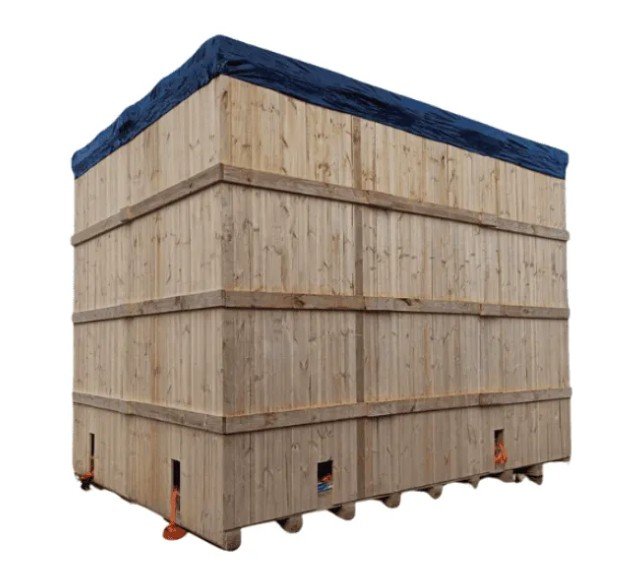Export Crating Solutions for Safe Global Shipping
Export Crating Materials That Guarantee Maximum Protection
Basic Information
Global trade has seen tremendous growth over the past decade, and with it comes the increasing demand for secure and efficient methods to transport goods across borders. Businesses are constantly seeking reliable solutions to ensure that their products reach international destinations safely and intact. Among the most trusted methods for safeguarding shipments is export crating, a practice that has become essential for companies involved in global logistics.
Understanding Export Crating
Export crating refers to the process of designing and constructing wooden, metal, or composite crates specifically for the transportation of goods internationally. Unlike standard packaging, these crates are tailored to the dimensions and fragility of the items being shipped, offering a higher level of protection against damage during transit. Crates are engineered to withstand handling stress, stacking pressure, and environmental factors such as moisture and temperature fluctuations.
For industries shipping heavy machinery, delicate electronics, or valuable artwork, a customized export crate is often the only reliable solution. The robustness of the crate ensures that goods remain secure, reducing the risk of costly replacements or insurance claims.
Key Benefits of Export Crating
1. Superior Protection
Unlike conventional cardboard boxes, export crates provide rigid and durable protection. Materials such as marine-grade plywood or reinforced timber shield goods from impacts, vibrations, and compression. This is particularly vital when transporting items over long distances, where multiple handling stages increase the risk of damage.
2. Compliance with International Standards
International shipping regulations often require packaging to meet specific standards, including ISPM 15 certification for wooden crates. Export crating ensures compliance, preventing delays or rejections at customs. Properly treated and certified crates demonstrate that businesses adhere to global safety norms, which enhances credibility with overseas clients.
3. Cost-Effective in the Long Run
While the initial investment in export crates may be higher than standard packaging, the long-term savings are significant. By minimizing product damage, companies avoid additional costs associated with replacements, repairs, or insurance claims. Moreover, reusable crates can be a sustainable option, reducing waste and contributing to eco-friendly logistics practices.
4. Versatility for Various Goods
Export crating is suitable for a wide range of products, from delicate instruments to bulky industrial equipment. Crates can be customized with internal supports, padding, and compartments to secure irregularly shaped items. This adaptability makes them a preferred choice for businesses shipping diverse inventories globally.
Choosing the Right Packaging Partner in Melbourne
Selecting a reliable packaging partner is critical for achieving safe and efficient shipping. Companies in Australia, particularly in Melbourne, have access to specialized providers offering high-quality crating services. Packaging Melbourne experts understand local and international shipping requirements, ensuring that crates meet industry standards while protecting the shipped items.
When choosing a packaging provider, businesses should consider:
-
Experience and Expertise: Providers with extensive experience in international logistics can recommend the best materials and designs for specific products.
-
Customization Capabilities: A partner capable of designing tailor-made crates ensures maximum protection and efficient use of shipping space.
-
Quality Assurance: Look for certification and quality checks to guarantee that crates meet safety and durability standards.
-
Sustainable Practices: Providers offering eco-friendly materials and reusable crates contribute to greener logistics solutions.
Best Practices for Export Crating
To maximize the benefits of export crating, businesses should adopt the following best practices:
-
Accurate Measurement: Precise measurements of the goods and internal compartments prevent shifting during transit, reducing damage risks.
-
Padding and Cushioning: Use foam, bubble wrap, or other cushioning materials to absorb shocks and vibrations.
-
Labeling and Documentation: Clearly mark crates with handling instructions and include necessary shipping documents to facilitate customs clearance.
-
Regular Inspections: Conduct thorough inspections before dispatch to ensure structural integrity and proper sealing of crates.
-
Environmental Protection: Apply waterproof coatings or shrink wraps to protect against moisture and humidity, particularly for long overseas journeys.
Emerging Trends in Export Crating
As global trade evolves, so do packaging solutions. Innovative trends in export crating include the use of lightweight composite materials, modular crate designs, and smart packaging technologies with sensors to monitor temperature and humidity. These advancements enhance the safety of goods while optimizing shipping costs and logistics efficiency.
Moreover, sustainable and recyclable materials are gaining prominence as businesses prioritize eco-friendly shipping practices. By adopting these trends, companies can reduce their carbon footprint while maintaining high standards of protection for exported goods.
Conclusion
In today’s fast-paced global marketplace, securing shipments through reliable methods is paramount. Export crating provides a robust and versatile solution for businesses looking to protect their goods during international transport. With the right packaging partner in Melbourne and adherence to best practices, companies can ensure their products arrive safely, comply with regulations, and maintain customer satisfaction.
Investing in high-quality crating solutions is not just about safeguarding products—it is a strategic move that minimizes risk, reduces costs, and enhances the reputation of businesses in the global trade arena. For any enterprise involved in international shipping, export crating is more than packaging—it is peace of mind delivered across borders.


